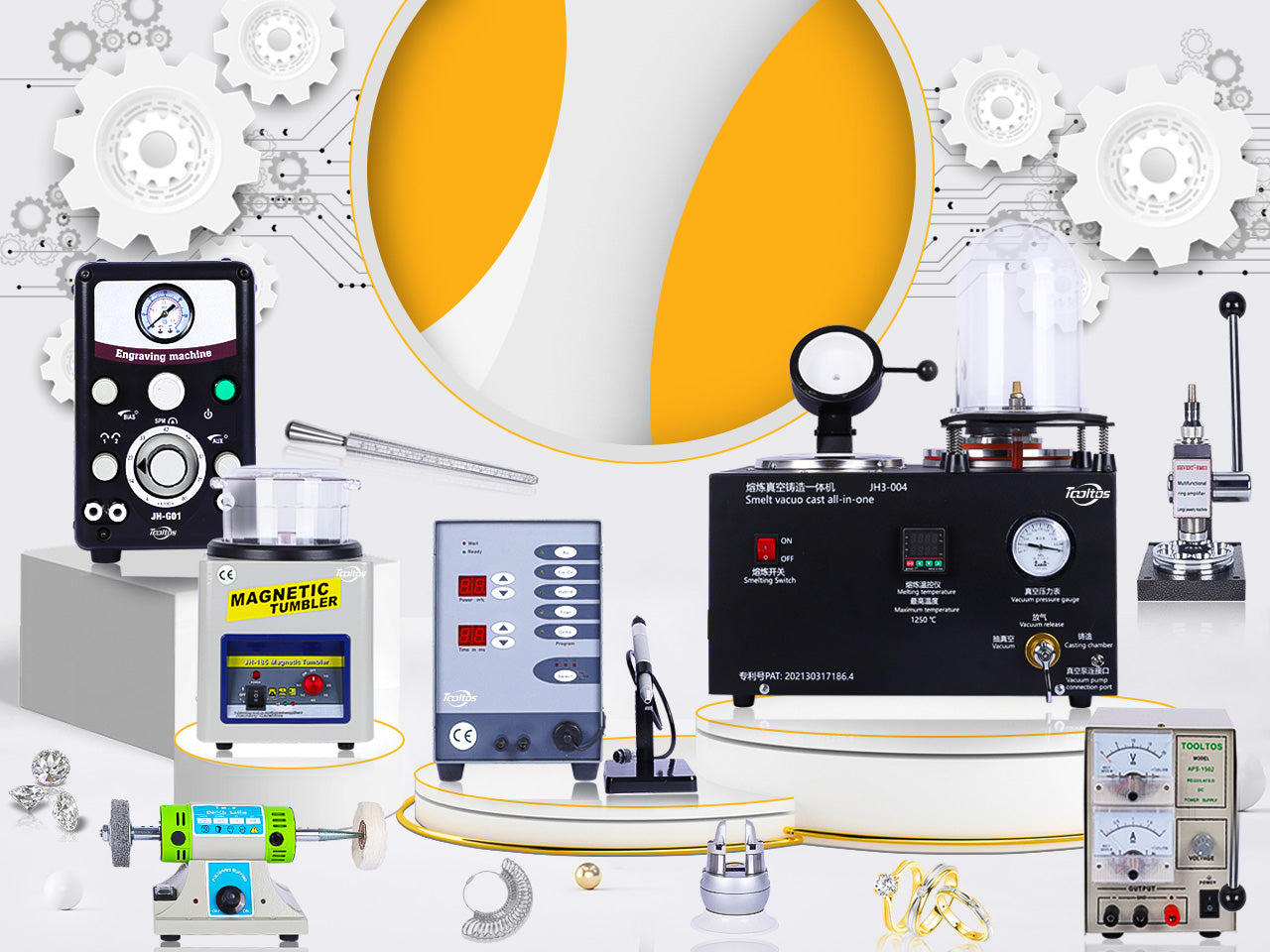Obtenir une belle finition est une étape cruciale dans la fabrication de bijoux et peut vraiment faire la différence entre un bijou et un bijou de luxe. Le polissage peut être intimidant au début car il y a de nombreuses étapes à franchir pour obtenir une brillance réussie. Pour atténuer la douleur du processus de polissage, nous avons rassemblé quelques conseils pour vous aider à obtenir une finition impeccable.
Poudre de pierre ponce
La poudre ponce est une poudre abrasive qui peut être utilisée humide, avec un pinceau ou en pâte pour nettoyer le métal avant et après le soudage. La poudre ponce produit une finition propre, blanche, non brillante et sans graisse qui permet de voir les éventuelles marques ou rayures qui doivent ensuite être éliminées. En tant que premier passage après la finition d'une pièce, elle est idéale car elle permet de voir à quelle étape vous êtes arrivé.
Veuillez noter qu'il faut s'assurer que les résidus de pierre ponce ont été complètement éliminés avant de passer à l'étape suivante.
Ne lésinez pas sur la préparation
Il est impossible d'obtenir un bon polissage sans éliminer au préalable les rayures de la surface métallique. Pour cela, il faut d'abord polir en continu avec une lime dans une seule direction. Comme pour tous les processus de polissage, il s'agit toujours de passer du grossier au lisse. Il faut donc d'abord éliminer les rayures tenaces avec une lime moyenne ou grossière, puis lisser avec une lime fine pour préparer la surface à l'étape suivante.
Polissage au papier de verre qui prend du temps
L'utilisation de papier de verre sec et humide ou de papier émeri est l'une des phases les plus chronophages de tout le processus de polissage, nécessitant une progression constante du grain grossier au grain lisse, d'environ 500 à 1200 grains. Bien qu'il n'existe pas de raccourcis, certains produits vous faciliteront la tâche.
Micromesh
Micromesh est un matériau abrasif rembourré, flexible et autonivelant, qui évite les rayures indésirables causées par certains grains plus grossiers. Le support en tissu flexible ne se déchire pas et, grâce à l'espacement entre les grains, il ne crée pas de déchets excessifs. Il est lavable et réutilisable, ce qui le rend extrêmement rentable. Le matériau de support plus rigide vous permet d'appliquer plus de pression pendant le travail, ce qui accélère finalement le travail. Ce sont donc des consommables très pratiques.
Raccourcis vers un travail détaillé
Après l'étape du papier émeri, il est parfaitement acceptable de polir au tonneau les pièces fines en utilisant un mélange de grenaille d'acier et de produits de polissage (par exemple de la poudre à polir ) pour obtenir des résultats satisfaisants. Il y a quelques règles d'or à garder à l'esprit :
- Ne surchargez pas le tambour avec des pièces car elles pourraient s'endommager mutuellement.
- Assurez-vous toujours que toutes les pièces percées sont filetées avec du fil et fixées pour éviter que les projectiles ne se coincent ensemble à l'intérieur.
- Ne placez jamais une chaîne dans une polisseuse à tambour sans l'enfiler dans le fil et la fixer.
- N'essayez pas de polir au tonneau des articles comportant de grandes surfaces de métal exposé, car ces articles seront piqués par le produit de polissage et une bonne finition ne sera pas obtenue.
- N'oubliez pas qu'une plus grande quantité de poudre de polissage ne garantit pas une meilleure finition. Suivez attentivement les instructions, sinon vous risquez de voir de la mousse s'échapper du haut du seau.
Le polissage à la meule démystifié :
En termes simples, le polissage des meules est divisé en deux étapes : la coupe et le polissage.
Coupe
La découpe utilise un abrasif plus grossier et une meule abrasive plus dure sur laquelle vous pouvez éliminer les rayures laissées par les étapes de limage et de papier humide/sec. Le but est de prépolir avant le polissage final. Idéalement, vous souhaiterez utiliser une meule à coudre ou une meule en feutre.
Le polissage utilise des composés plus fins et des disques de polissage plus souples pour meuler le métal et lui donner un brillant éclatant. Les disques de polissage peuvent être fabriqués à partir de velours, de daim et de coton ultra doux.
Voici une liste de points à garder à l’esprit :
- Le produit de polissage est appliqué sur la meule de polissage pendant qu'elle tourne, et non lorsqu'elle est immobile. Il suffit d'enfoncer la bande de polissage dans la moitié inférieure de la meule tout en la maintenant fermement pendant une seconde ou deux.
- Utilisez toujours la moitié inférieure de la meule de polissage pour polir la pièce afin que si la pièce s'envole de votre main, elle atteigne l'arrière de la machine et non l'autre côté de la pièce.
- Si vous trouvez des dépôts noirs sur le métal, il y a trop de produit de polissage sur la serpillère. Lavez la pièce métallique à l'eau chaude savonneuse pour éliminer la saleté et continuez à l'utiliser.
- Tous les petits objets ou objets complexes, tels que les chaînes, peuvent être maintenus contre un morceau de bois plat ou un mandrin pour faciliter leur polissage lorsqu'ils sont chauffés. (Assurez-vous qu'ils sont au ras de la surface au cas où la roue les attraperait).
- Bien que cela soit tentant, ne portez jamais de gants lors du polissage car cela peut constituer un risque pour la sécurité. Si vos doigts ont besoin d'être protégés de la chaleur, utilisez du ruban adhésif ou du cuir de protection pour les doigts.
Nous espérons que cela vous a donné une idée de la manière d’obtenir des résultats impeccables en utilisant les bonnes techniques.


0 commentaires